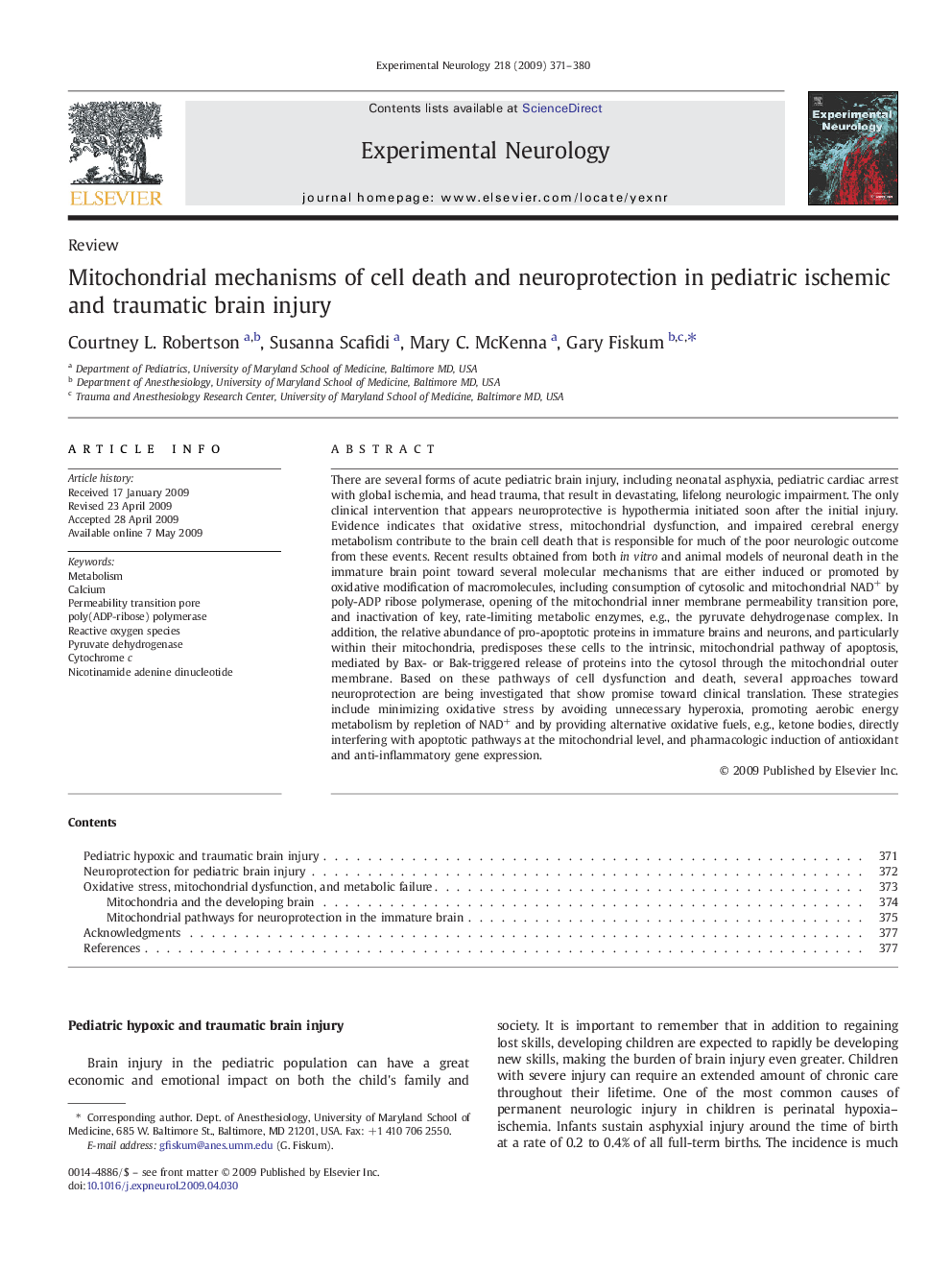| کد مقاله | کد نشریه | سال انتشار | مقاله انگلیسی | نسخه تمام متن |
|---|---|---|---|---|
| 3056236 | 1186558 | 2009 | 10 صفحه PDF | دانلود رایگان |

There are several forms of acute pediatric brain injury, including neonatal asphyxia, pediatric cardiac arrest with global ischemia, and head trauma, that result in devastating, lifelong neurologic impairment. The only clinical intervention that appears neuroprotective is hypothermia initiated soon after the initial injury. Evidence indicates that oxidative stress, mitochondrial dysfunction, and impaired cerebral energy metabolism contribute to the brain cell death that is responsible for much of the poor neurologic outcome from these events. Recent results obtained from both in vitro and animal models of neuronal death in the immature brain point toward several molecular mechanisms that are either induced or promoted by oxidative modification of macromolecules, including consumption of cytosolic and mitochondrial NAD+ by poly-ADP ribose polymerase, opening of the mitochondrial inner membrane permeability transition pore, and inactivation of key, rate-limiting metabolic enzymes, e.g., the pyruvate dehydrogenase complex. In addition, the relative abundance of pro-apoptotic proteins in immature brains and neurons, and particularly within their mitochondria, predisposes these cells to the intrinsic, mitochondrial pathway of apoptosis, mediated by Bax- or Bak-triggered release of proteins into the cytosol through the mitochondrial outer membrane. Based on these pathways of cell dysfunction and death, several approaches toward neuroprotection are being investigated that show promise toward clinical translation. These strategies include minimizing oxidative stress by avoiding unnecessary hyperoxia, promoting aerobic energy metabolism by repletion of NAD+ and by providing alternative oxidative fuels, e.g., ketone bodies, directly interfering with apoptotic pathways at the mitochondrial level, and pharmacologic induction of antioxidant and anti-inflammatory gene expression.
Journal: Experimental Neurology - Volume 218, Issue 2, August 2009, Pages 371–380